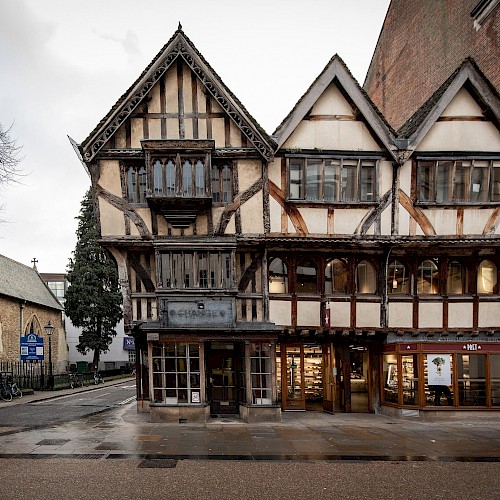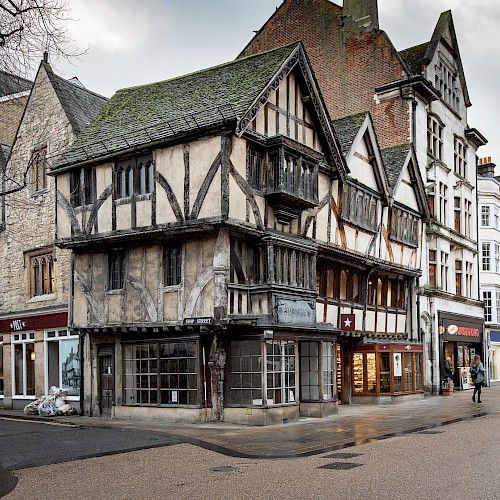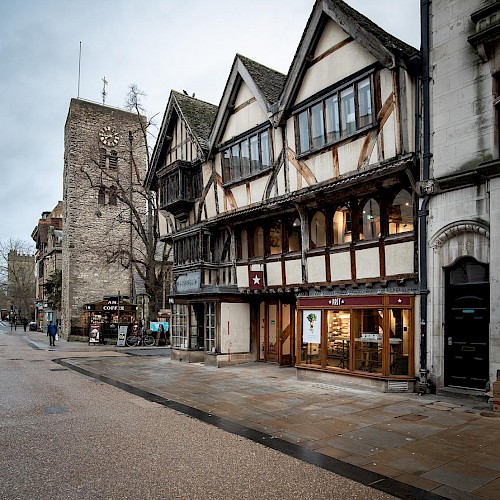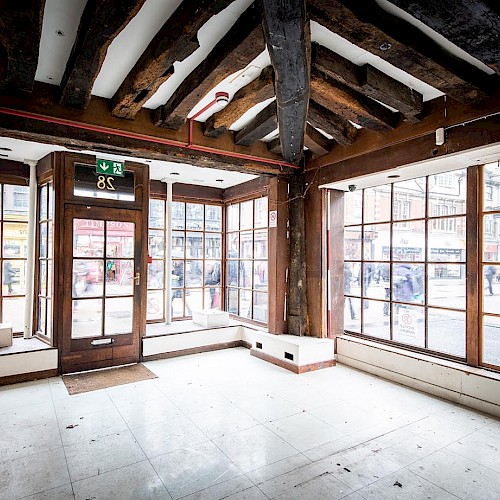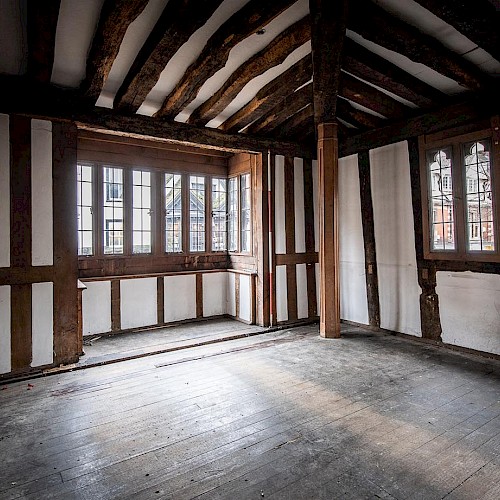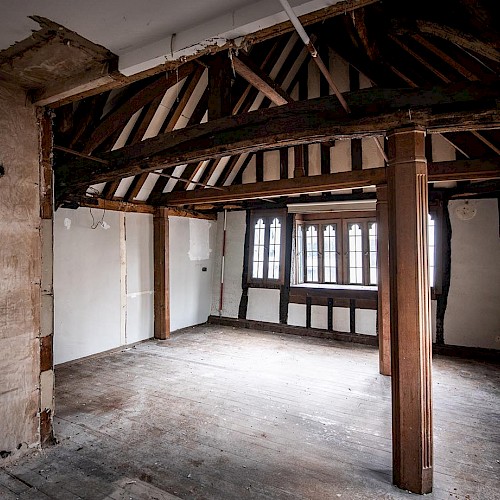28 Cornmarket Street,
Oxford
Grade II Listed Building (NHLE: 1369341)
Photographic and building survey prior to conversion of shop
OASIS: thejesso1-390187
The aim of the project was to provide a permanent, publicly accessible, photographic and archaeological record of any exposed historic fabric prior to the refurbishment of the property.
The building comprises a purpose built shop that dates to the last quarter of the 14th Century, forming a row of five units arranged over three floors with a cellar below. It was linked to a courtyard to the rear that formed the New Inn, a large hostelry that continued in use until its sale in 1775 when it had become known as the Blue Anchor. No.28 Cornmarket had multiple occupants and tenants over the years, with the most comprehensive records surviving from the 19th – 20th Centuries which detail the following uses: drapers, boot and shoe warehouse, a Fancy Bazaar which sold everything from bags and jewellery to prams, card games and conjuring tricks, a tea room, cycle shop, photographers, cleaning company, and opticians.
No.28 Cornmarket underwent two phases of repair and restoration in 1920 by J.C. Leed and then in 1950-52 by the architect Thomas Rayson who installed a steel frame to secure the stability of the timber frame. The adjacent property that formed part of the New Inn/Blue Anchor was restored in the 1980s, following a detailed archaeological survey by David Sturdy, Julian Munby and Nick Joyce. This work did describe aspects of No.28, although as it was a separate freehold it was not as detailed.
This current programme of archaeological survey has produced an internal and external photographic record of the building and identified features exposed on structural timbers that correlate with the previous work undertaken by Munby et. al. Remains of a buttress possibly forming a foundation arch was identified within the cellar, which may be contemporary to one discovered during the demolition of the south range of the Blue Anchor in 1904 and would therefore pre-date the construction of the existing shop in the 14th Century. In addition, new evidence for the internal arrangement of the rooms has been recorded, although the date to which these relate is unclear. A pair of ritual apotropaic taper marks were recorded on the second floor, features that were deliberately burnt into the timber in an attempt to ward off evil spirits.
Scope of work: measured survey, photography survey
